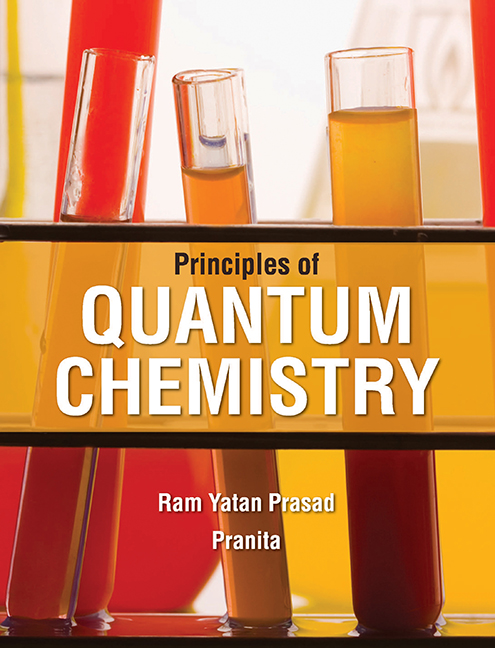Book contents
- Frontmatter
- Dedication
- Contents
- List of Figures
- List of Tables
- Foreword
- Preface
- 1 Quantum Theory
- 2 Wave–Particle Duality
- 3 Mathematical Techniques
- 4 Quantum Mechanical Operators
- 5 Postulates of Quantum Mechanics
- 6 The Schrödinger Equation
- 7 Playing with the Schrödinger Equation
- 8 Hydrogen Atom
- 9 Approximate Methods
- 10 Diatomic Molecules
- 11 Multi-electronic Systems
- 12 Polyatomic Molecules
- 13 Hückel Molecular Orbital Theory/Method
- 14 Density Functional Theory
- Glossary
- Appendix I
- Appendix II
- Appendix III
- Model Question Papers
- Index
12 - Polyatomic Molecules
Published online by Cambridge University Press: 02 December 2022
- Frontmatter
- Dedication
- Contents
- List of Figures
- List of Tables
- Foreword
- Preface
- 1 Quantum Theory
- 2 Wave–Particle Duality
- 3 Mathematical Techniques
- 4 Quantum Mechanical Operators
- 5 Postulates of Quantum Mechanics
- 6 The Schrödinger Equation
- 7 Playing with the Schrödinger Equation
- 8 Hydrogen Atom
- 9 Approximate Methods
- 10 Diatomic Molecules
- 11 Multi-electronic Systems
- 12 Polyatomic Molecules
- 13 Hückel Molecular Orbital Theory/Method
- 14 Density Functional Theory
- Glossary
- Appendix I
- Appendix II
- Appendix III
- Model Question Papers
- Index
Summary
We are aware of the fact that a molecule is an aggregate of atomic nuclei encircled by electrons. The situation is this that the nuclei repel each other but are attracted by electrons, which also repel one another. The aggregate molecule will remain stable only if the sum of the attractive forces between nuclei and electrons just balance the repulsive forces among nuclei and among electrons present.
It is to be noted that we have derived the Roothaan's equations and Hartree−Fock self-consistent field (SCF) methods in Chapter 11 under multi-electron system. In this chapter, we shall discuss the matrix form of the Roothaan's equations and also deliberate on the Roothaan's method for quantum mechanical calculations in one dimension.
In this chapter, we shall also deal with the shapes of molecules. For diatomicmolecules, the only structural element is bond length, but in case of polyatomic molecules, both bond lengths and bond angles are important elements, which determine the energy of the molecule. We have studied earlier the nature of bonding in diatomic molecules. We want to extend the discussion of bonding to molecules in which one central atom is joined to other atoms more than one in number. We have discussed while giving idea of the valance bond theory that electrons in a molecule occupy atomic orbitals and in the course of the bond formation, these orbitals overlap. We also learnt that greater the overlapping, stronger will be the bond formation, and the direction of the bond is estimated by the direction in which the two orbitals overlap as far as practicable. Overlapping of atomic orbitals actually yields a stable bond, provided the atomic orbitals have the same energy and adequate symmetry.
In this chapter, we shall also discuss the shape of molecules for which hybridisation will be dealt with. We shall give the quantum mechanical picture of hybridisation of different kinds.
Matrix form of the Roothaan's equations
The Roothaan's equations (Eq. (11.176), Chapter 11) are represented by
In this equation, the coefficients Cja are related to the MOs fa and the basis function cj by the following equation:
- Type
- Chapter
- Information
- Principles of Quantum Chemistry , pp. 581 - 640Publisher: Foundation BooksPrint publication year: 2014

